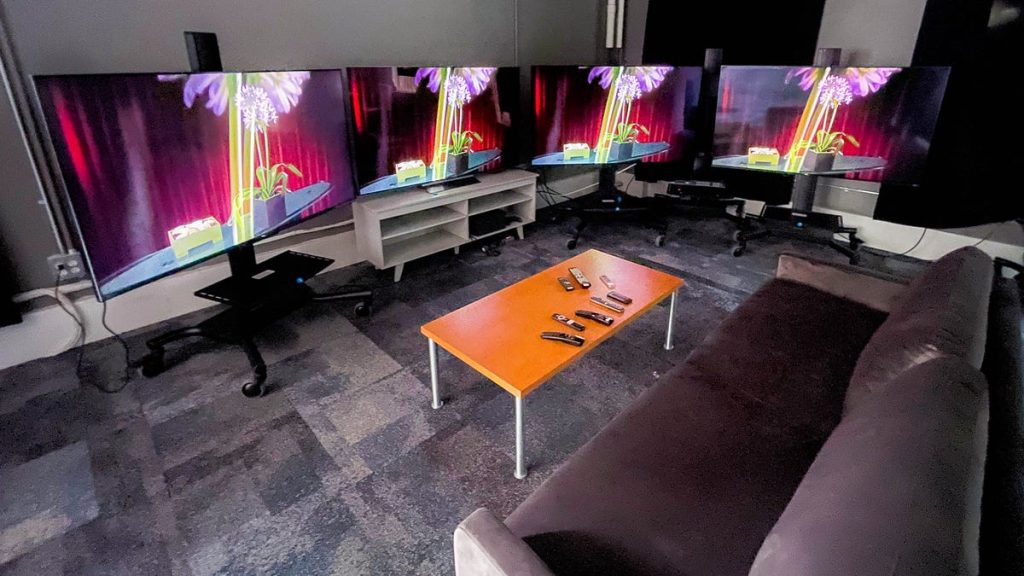When shopping for a TV, price is a major factor to consider. TVs can range in price from $100 to over $2,000, with smaller screens generally being cheaper, while well-known brands and higher price points typically offer better image quality. While most entry-level TVs provide a good enough picture for the average consumer, it may be worth spending more to get a better picture quality, especially considering that TVs are typically a long-term investment. It is also recommended to shop for a TV in the fall when prices tend to be lower.
Screen size is another important factor to consider when purchasing a TV. It is generally agreed that bigger is better, with a minimum size of 43 inches recommended for a bedroom TV, 55 inches for a living room or main TV, and 65 inches or larger being ideal. Investing in a larger screen size is often seen as a better use of money than focusing on other features, as many people regret not going bigger when they initially bought a TV. Rarely do people complain that their TV is too large, so opting for a larger screen size is often a wise choice.
The capabilities of a TV are also crucial to consider when making a purchase. For entry-level TVs, the smart TV system that the TV uses is a key feature to look out for. In midrange models, features such as full-array local dimming, mini-LED, and a 120Hz refresh rate can significantly improve picture quality. OLED technology is often recommended for those looking to invest in a high-end TV, as it delivers superior image quality. Each of these capabilities can enhance the viewing experience and ensure that you get the most out of your TV.
It is also important to consider the type of content you will be watching on your TV when making a decision. For those who watch a lot of sports or action-packed movies, a TV with a high refresh rate (such as 120Hz) can provide a smoother viewing experience with reduced motion blur. Additionally, those who enjoy streaming services may benefit from a TV with built-in smart features, such as access to popular streaming platforms like Netflix, Hulu, and Amazon Prime Video. Understanding your viewing habits and preferences can help guide you in selecting a TV that suits your needs.
When it comes to audio quality, many TVs come with built-in speakers that may not deliver the best sound experience. Investing in a soundbar or external speakers can greatly enhance the audio quality of your TV, providing a more immersive viewing experience. Additionally, considering the placement of your TV and speakers within your space can help optimize sound quality and create a more enjoyable entertainment setup. Ensuring that both the visual and audio aspects of your TV viewing experience are top-notch can help you fully enjoy your investment in a new television.
Ultimately, when shopping for a TV, it is important to consider a variety of factors including price, screen size, capabilities, content preferences, and audio quality. By carefully evaluating these aspects and prioritizing features that align with your viewing habits and preferences, you can make an informed decision and select a TV that will provide an exceptional viewing experience for years to come. Whether you are looking for a budget-friendly option or a high-end model with advanced technology, there is a TV out there to suit your needs and enhance your entertainment setup.












